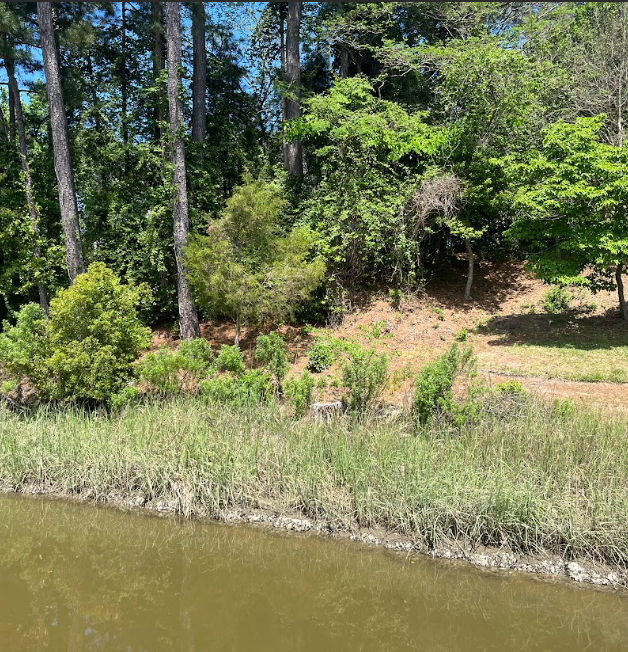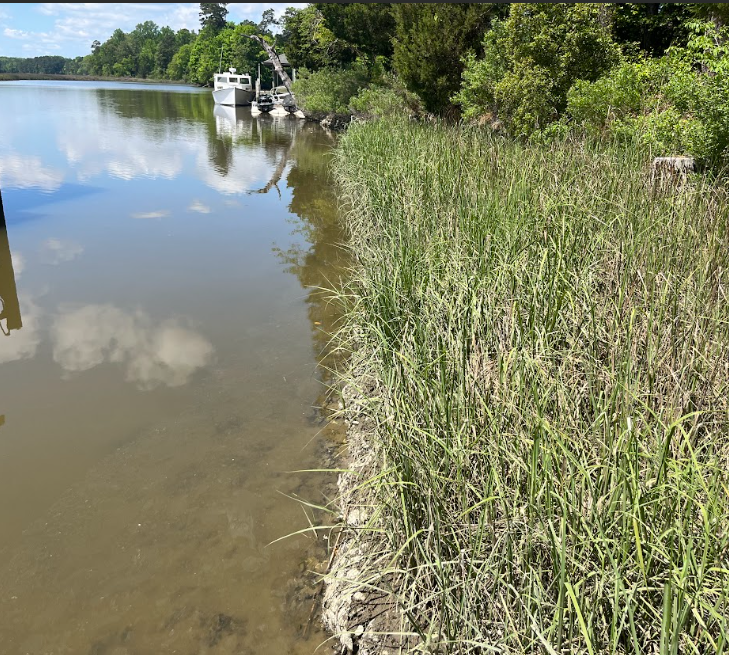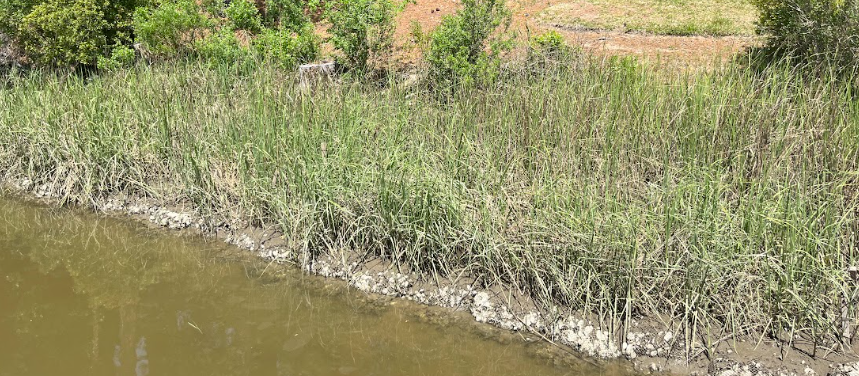John Curry and his wife bought their home along Brewers Creek in Carrollton, VA about 10 years ago. Part of the property’s appeal was its shoreline and a dock that provided a place to enjoy the flowing water and a clear view of the plants and animals that lived beneath it. Over time, John noticed some erosion of the shoreline, but it was happening pretty slowly. To help him understand how much of his shoreline was being lost to erosion, he installed marker poles where the shoreline and the high water line met.

As a possible solution to erosion on his property, John considered a bulkhead. A bulkhead is a large concrete barrier that acts as a retaining wall to prevent erosion. After a call to the Virginia Department of Conservation and Recreation’s Shoreline Erosion Advisory Service, an engineer visited John’s property to assess his erosion and offer recommendations. Unfortunately, applying for the necessary permits to do the installation was going to be costly, time-consuming, and was not guaranteed, so John decided not to proceed. About six months later, the engineer who visited his property called to tell John about an opportunity to have a living shoreline installed with financial support from the James River Association’s cost share program. Through this process, John learned just how many resources are available to homeowners to reduce costs associated with the installation of a living shoreline.

The living shoreline project involved the installation of sand, coconut coir logs, and oyster bags. Due to a septic line on the property that couldn’t be crossed by machinery, the team had to manually move all materials from a truck, across the property using wheelbarrows, and down a drop of about 20 feet to reach the installation site. John was amazed the project could be completed without mechanical equipment and that cost share programs like these offered this level of financial support to private property owners. An added benefit of living shoreline installation is its relative ease of maintenance when compared to alternatives. lt was well worth the sweat equity.
John’s living shoreline project has been in place since 2019, and he has seen a noticeable difference. John enjoys spending time on his dock and has learned firsthand that oysters spit water! He has also noticed:

He encourages other property owners who want to prevent erosion and enhance their shorelines to contact state and local agencies for information, as well as nonprofit organizations and associations like the James River Association and the Living Shoreline Collaborative. Without the help of the Virginia Department Conservation and Recreation, he would have never known about the funding and labor support available to him and may have just left his shoreline to the mercy of the waters of Brewers Creek.
Content created by Green Fin Studio


